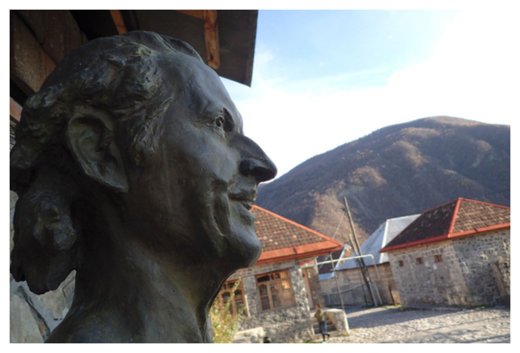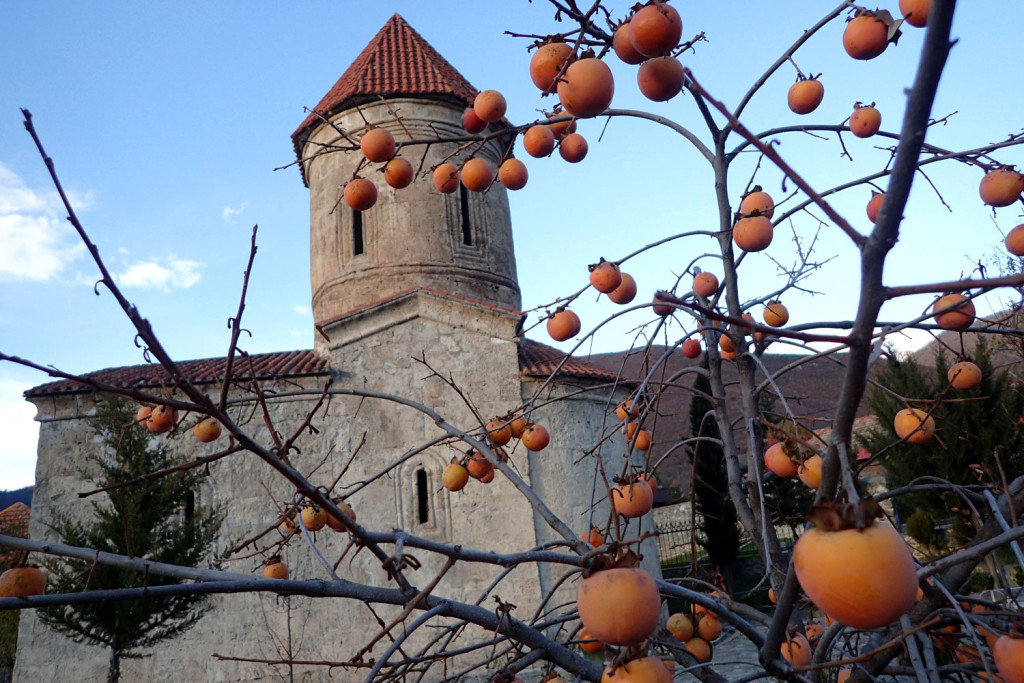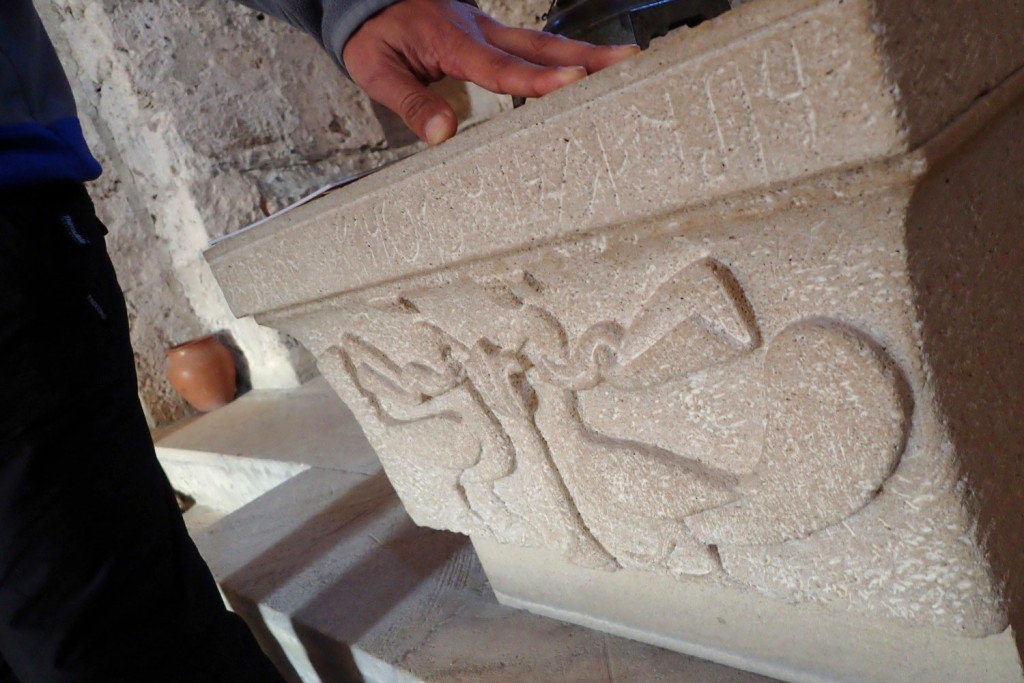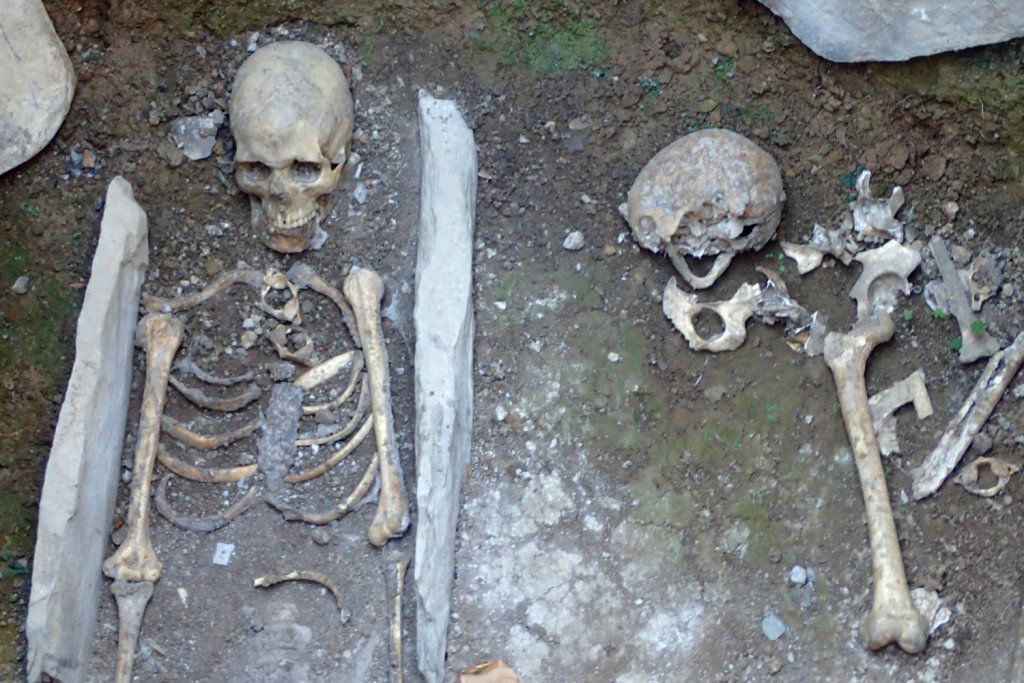
What is Kiş?
Kiş is a remote mountain village that has preserved what may be the oldest Christian church in Azerbaijan, and perhaps in the whole region: a temple founded, according to local legend, in the first century A.D. Its walls are built of pale weathered stone. Its crypts hold nameless dead. Its garden shines with persimmons that hang like fiery tree ornaments from winter-bare branches. The church features a large bronze bust outside its walls: a grinning Thor Heyerdahl, the fabled Norwegian adventurer. This artifact is puzzling.
"Thor Heyerdahl was a great man," Khatiza Abdulrahman, a local government guide, tells us. "He discovered that Azerbaijanis and Norwegians are related."
And so: The global walk stumbles once again into a bizarre and forgotten back eddy of time and place—into another of the world's obscure mysteries.
Heyerdahl, who is mostly famous for sailing a balsa raft called the Kon-Tiki across the South Pacific in 1947, enjoys something of a cult following in Azerbaijan. Why? The dashing Norseman who bobbed across the world's oceans in antique boats during the latter half of the 20th century, always hoping to demonstrate how ancient civilizations may have contacted each other by sea, developed his final theory of cultural diffusion at Kiş. He believed the blond and ginger-haired Vikings of Scandinavia—his own ancestors—originated from somewhere in or near this nation of Turkic speaking peoples at the edge of Persia.
His proof?
An 800-year-old Icelandic saga mentions that Odin, the Norse god and a mythic ancestor of the Vikings, migrated to Scandinavia from an eastern land called "As-hov" or Aser." Thus: Azer-baijan. Add local petroglyphs that depict ships similar to the longboats used by Norse sea raiders to terrorize Europe during the Middle Ages. (Unfortunately, these rock engravings happen to be immensely older than the Vikings, dating back to the Neolithic.) Throw in some vague affinities between Azerbaijani and Norwegian folk music. Mix in a few scraps of allegedly "runic" script unearthed in both nations. And voila: Vikings came from what is today a secular Muslim oil state that, in 2012, scored its own raid against Europe by snatching the Eurovision Song Contest away from three-time host Sweden.

Modern researchers sigh wearily at such hypotheses.
"Thor Heyerdahl was a great traveler," Jeyhun Eminli, an Azerbaijani archaeologist, tells me. "He wasn't much of a scientist."
There is no hard evidence, Eminli says, that supports direct Norwegian-Azerbaijani ancestry. A widely cited DNA study linking the two peoples is controversial.
Eminli is brave. Viking heritage has become tangled up somehow with questions of national pride in Azerbaijan.

Viking mystique endures at tiny Kiş partly because of its graves. Very tall people were buried here between the third and tenth centuries. One man was 6'7″ (two meters) tall. One woman towered to almost 7'3." Supposedly, this adds credence to the presence of hulking proto-Scandinavians in these snowcapped Eurasian mountains. Perhaps this is why Heyerdahl came here.

We strike out, Gojayev and I, for the next gravelly river, for the next alpine town.
We all want to belong to some saga.



and the Azerbaijani are particularly tall with their 5.5foot and particularly fair with their black hair and olive skin. The only connection could be that they were the reason the vikings left those lands overwhelmed by the influx of turks and mongols. as far as dna is concerned there is a curious similarity between the dna pool in the central balkans, corsica, sardinia and Scandinavia so I would say the vikings were together with the remains of the thracians the proto european population